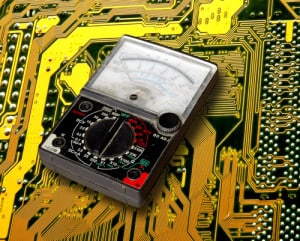
The ability to identify and sort vast quantities of data into the appropriate, actionable “buckets” will be the utilities’ key to success for smart grid systems.
Big Data continues to make waves across industries. What used to refer just to the massive amounts of information companies receive has now evolved to also refer to new technologies that access and leverage it. For the electric power utilities sector, which is currently going through its own evolution, data analytics solutions can help utilities adapt their business models. If managed correctly, analytics can lead to the creation of new products and capabilities to address some of the most important and unsolved issues facing utilities today.
In fact, 70 percent of utility IT decision-makers consider their organization’s ability to extract intelligence from Big Data as critical to their future success. This percentage will most likely increase as the demand for electricity grows and the addition of smart grid technologies changes the way utilities operate.
Challenges and Opportunities
Utilities looking to use the data they have on their networks will have to harness a large amount of constantly changing information. Once they wrangle it, then they can use it to meet their business objectives, including creating new sources of revenue that go beyond generation.
But in order to install effective smart grid systems, utilities will need capital to put these systems in place, as well as determine which financial models they can use to defray potentially high initial costs.
Further complicating the matter is that the current state of smart grid solutions is not enough to meet the needs of utilities and their customers. Today’s “smart grid” it is not truly a smart grid, but simply smart(er) metering. The components that make the grid smarter—networking capabilities, digital controls, distributed intelligence, smarter failure avoidance strategies, etc.—have not yet been developed in their most effective form. These components derive most of their value by producing data that utilities have never accessed in the past. But for now, much of the data being created is of limited value. What the industry lacks is a tangible method for interpreting and understanding this data, and a truly meaningful way to implement it.
Thus, the question is: How does a utility minimize the costs and activities associated with smart grid implementation?
Utilities and the Future of Big Data Analytics
The ability to identify and sort vast quantities of data into the appropriate, actionable “buckets” will be the utilities’ key to success. The implementation of these tools (intelligent devices, sensors, advanced metering infrastructure (AMI), micro-grids, advanced distribution management, remote asset monitoring, and more) only increases the quantity of data that utilities have to manage. And, it doesn’t stop there Those tools will also increase the type of data utilities will need to manage. For example, real-time data from sensors will play a much greater role for utilities as time goes on.
The industrial Big Data sphere is already becoming cluttered with multiple cloud structures and communications protocols. Though utilities will have all of this data at their fingertips, they need solutions that can optimize the many cloud systems and architectures into smaller, singular standards, allowing the greater analysis and sorting of vast quantities of data into appropriate market verticals and optimal actions.
Another challenge is translating this data into a readable format so that they can easily find out what information is relevant and most valuable. Having a solution that clearly represents all of these new tools and the associated influx of data will be crucial to success. Utilities will need to create interfaces and deploy business-centric algorithms that tie all the data together in a way that will be easy for people to see what information is valuable.
Given the current expectation that energy demand is projected to grow by more than a third of its current amount by 2035, it is critical that utilities implement solutions to help them deal with associated demands from this explosive growth. Part of this growth in energy demand is due to the world becoming increasingly more connected, which means that utilities need to be five steps ahead on the technology front in order to benefit everyone involved—from the utility itself to the consumer
Want more? Check out our most-read content:
Frontiers in Artificial Intelligence for the IoT: White Paper
IoT’s Value? It’s Mostly in Traditional Business
Research from Gartner: Real-Time Analytics with the Internet of Things
Report: Text Analytics Must Move Beyond Social
Why Enterprises Struggle with Apache Storm and Spark Streaming
Liked this article? Share it with your colleagues using the links below!




























